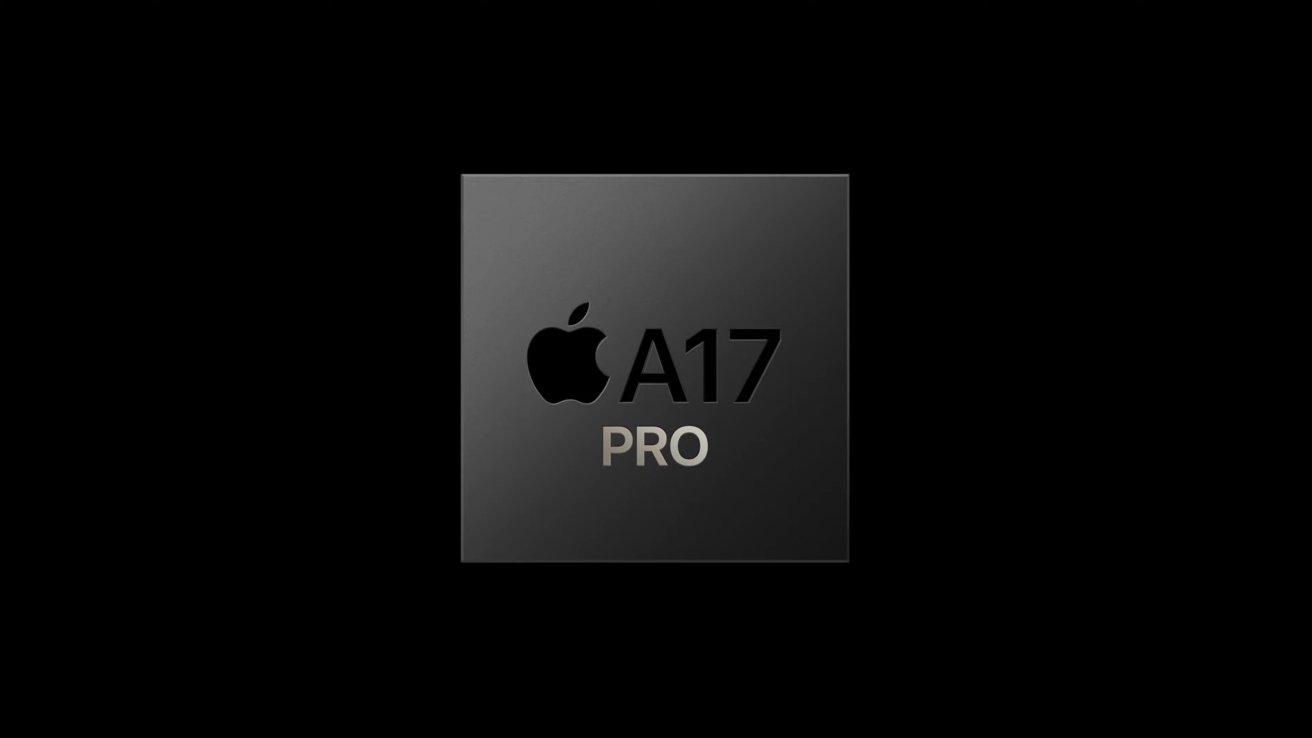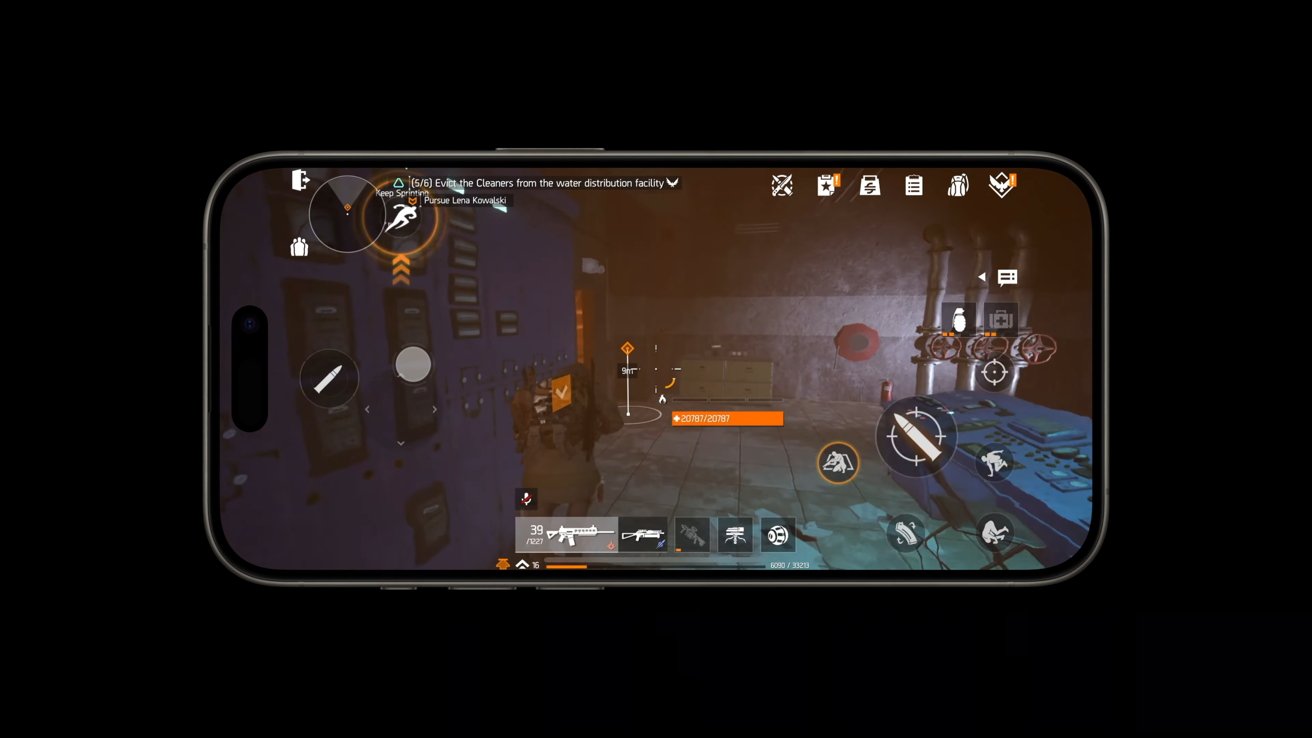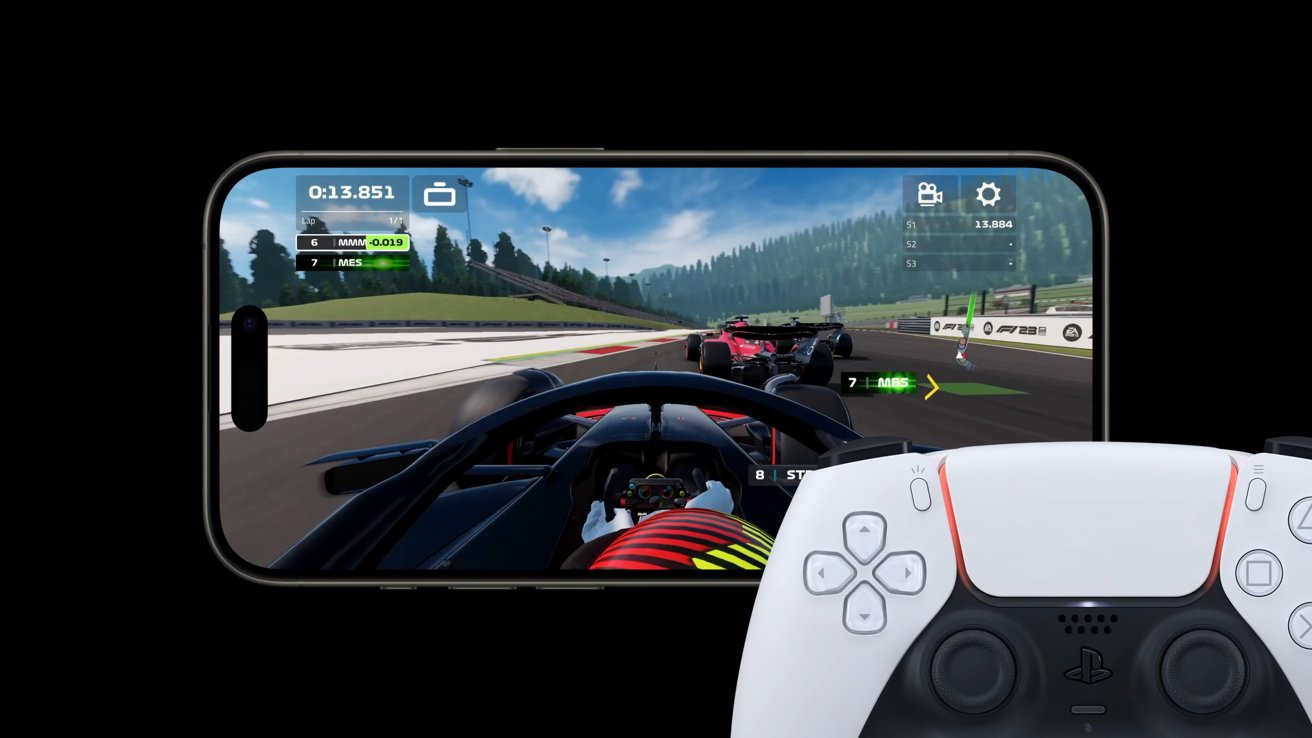Apple on iPhone 15 Pro: 'The best game console is the one you have with you'
Apple wants gamers to know they are taking things seriously with iPhone 15 Pro in an interview covering game console competition, physical controllers, and 4K monitor support.

iPhone gaming enters a new generation
The iPhone 15 Pro and iPhone 15 Pro Max run the A17 Pro, which includes hardware-accelerated ray tracing and a 6-core GPU. These features are expected to make these pro models powerful gaming machines.
Apple's Senior Director of GPU Software Jeremy Sandmel, VP of Platform Architecture Tim Millet, and VP of Worldwide iPhone Product Marketing Kaiann Drance spoke with IGN about the gaming push around iPhone 15 Pro and what it means for gamers. The interview focuses on the AAA titles coming to iPhone and what users can expect from them versus the console versions.
4K gaming on external monitors
USB 3.0 Type-C on iPhone 15 Pro enables new features like mirroring content at 4K HDR on an external display. The first question asks how this works with games like Resident Evil 4.
"As you probably know, there's the display resolution and then there's the gaming resolution, and then the frame rates, the game rendering," Sandmel responded. "With technologies like MetalFX's upscaling, we can sort of separate those two things."
This means iPhone can run the games at high frame rates with great quality and upscale the output to fit the display's resolution. So, users can connect their iPhone 15 Pro to a 4K monitor and play games, but developers need to provide support for some functionality.
"The building blocks are there," said Millet. "We can enable applications to enable those experiences, and then the developer's job is, of course, to try to take those tools, piece them together and build an experience for you, the gamer, so that it all comes together. "
Balancing power and efficiency
The iPhone 15 Pro shouldn't overheat even when dealing with extreme gaming conditions like high-level graphics and frame rates. Developers have the tools to ensure they aren't going to "burn a hole through the back of the phone."

A17 Pro brings hardware ray tracing to mobile
Tools like MetalFX help keep things like thermals under control thanks to the scalability of the software. But Millet explains how scaling is used all over the system, not just MetalFX.
"The display itself has a really amazing scaling technology built in," Millet continues. "The GPU can do scaling. So with features like ray tracing and mesh shading and this really advanced compute architecture, the developer has access to all of these algorithms to figure out what's the best balance of compute and quality and performance and frame rate and resolution."
An ecosystem of gaming
Apple Silicon processors built for Mac, iPad, and iPhone all share similar base technologies that could enable games to launch on multiple platforms. Like Resident Evil Village coming from Mac to iPhone, other games could go from iPhone to Mac.
"We don't want to speak for the developers here, we'll let them sort of talk to their plans, but I would say Capcom brought out Resident Evil Village last year for Mac and now for the phone this year," Sandmel elaborated. "And one of the things that fundamentally enabled that is this unification of the architecture of Apple Silicon and the iPhone Silicon and the iPad Silicon."
Game controllers and touch
One of the bigger limitations of AAA gaming on devices like an iPhone is the touchscreen. Apple has shifted from prioritizing touch controls in the past to enabling users to connect almost any Bluetooth controller to iPhone.

Touch controls are an option for AAA games
When it comes to AAA games requiring controllers, Drance says developers get to choose what works best for their games.
"Well, we're mostly allowing that to be both; one, user choice, but also developers in terms of what they view as the best game experience," said Drance on the topic. "Obviously, certain types of gameplay work fine and great with onscreen controllers. Some of them want an option so that you have the gameplay in an external controller, and as you probably saw yourself, we showcase the Backbone controller, it works with the iPhone 15 Pro and it's a great experience."
Taking on the console market
Tim Millet concludes the interview by suggesting Apple isn't trying to compete with consoles like Xbox or PlayStation. Any comparison made between iPhone's gaming initiative and consoles is meant to promote Apple's progress in the space, not a direct attempt to compete.

A mobile console experience
"It is like the everything you love and depend on, your device, your phototaking, your memory capturing, and now it's a powerhouse game console, but one that is in your pocket that you can take anywhere, game over different wireless networks, game on different titles, different ways that you get," Drance said about iPhone's evolution to become a gaming console. "I mean, it's remarkable how it all comes together."
Sandmel closes with a phrase normally applied to smartphone cameras but geared towards gaming. "I think they say the best game console is the one you have with you."
The interview goes into much more detail on these topics, so check it out in full on IGN.
AppleInsider will test the upcoming AAA games on the iPhone 15 Pro hardware in the coming weeks and report on the experience. Many of our staff play video games regularly, so this is a field we hope Apple may finally begin to take seriously.
Of course, veterans of both video games and Apple will know these stories have been spun before. Maybe this time, Apple will put some force behind AAA gaming experiences for its platforms.
Read on AppleInsider

Comments
'The best game console is the one you have with you'
Really? "Finally" and "Begin"? This culmination is well over 5 years in the making...
They didn't just begin, dude, gees... To me the whole strategy of Apple's seems they have been lurking around the back, and are about to spring inside and go nuts on people!
As an old gamer with limited time to game I tend to engage with casual spur of the moment games and I sense that maybe Apple would want to consider some first party titles aiming a bit higher than the current Arcade offering which feels like warmed up left overs from a bygone era.
Nintendo, Sony and Microsoft have proven that first party titles are helpful in attracting mindshare and does not discourage the growth of a vibrant ecosystem of publishers on their platform.
Apple Arcade+ launch in conjunction with a souped up Apple TV with the hardware raytracing oomph from an M3 derivative and the iPhone 15 Pro could set the scene for a 4th major platform of gaming (if ignoring Steam for a moment). Question is if it is possible to squeeze M3 into a price point that works for Apple TV launch.
To note is that the Vision Pro's future non-Pro sibling may help accelerate Apple eco system gaming, but that feels quite some years out.
Next gen consoles are likely going ARM for their instruction ets and likely will also have substantial machine learning accelerators to support GPT powered NPC bots as illustrated in some epic research papers lately.
Apple TV+ is doing well and proves Apple can do content and media strategy. However they are gunning for a smaller slice of revenge than gaming. Much smaller.
I'm not a game developer, so I don't know whether that is true. But I am an application developer and it rings true - I definitely wouldn't want to write totally different versions of my application for Windows, macOS, and Linux - it is one of the reasons the Java programming language/platform become so popular in the application/enterprise space. Which brings me to a question: are the programming languages used to write those games on other platforms even available on iOS? I know Java isn't, but I think that had more to do with it requiring a runtime environment (i.e. an interpreter/platform) - maybe compiled languages such as C/C++, etc. are allowed/supported by Apple?
What does this post mean? Are you agreeing with me? Disagreeing with me? Trying to give me information you think I don’t have already?
Take the win...
Second, I don't think that the thermal envelope of an iPhone allow for long gaming sessions, especially with high end graphics and ray tracing. At the same time, consoles has less thermal limits compared to an iOS device, so games will look and play better in long gaming sessions.
Still, I'm looking forward to see how developers support Apple gaming platform, specifically with AAA games.
They are committed to Apple TV+. Taking it seriously. They are spending billions of dollars a year on TV+ production deals and sports deals. There really isn't an ROI for that. Or you can couch it as a way for them to sell Apple hardware. Develop good content. People want it, pay for it. They will then buy Apple hardware. As platform, that needs to be done.
So called "AAA" games are basically content for a platform. When the answer to the above question is "buy a game console, PC, or Apple gaming device" they've succeeded. It will take a TV+ like commitment. Usual the chicken or the egg issue, but we already know that "build it and developers will come" strategy doesn't work. They don't need to have cheap hardware, but Apple themselves have to ensure that core set of great games are available for their platform. The latter, exclusive catalog of have-to-play games, is hugely important.
Developers will only voluntarily bring their games to the platform if they can make money. That really means Apple has to publish good games themselves because developers won't do it. They will only voluntarily do it when they see they can make money. So like with TV+, Apple will have pay billions to developers of top games, pay tens of millions to get a library of old good games onto the platform, and invest hundreds of millions on good exclusive games to develop the market on their platform.
An M2 Mac mini with 16 GB RAM and 512 GB storage will make a perfectly find machine for school, work and gaming. An M3 Mac mini even more so. An Apple TV with an A17 Pro for $300 will make a good gaming device. They have all the hardware they need to make a good gaming device from handhelds to desktops. It's not a question of hardware or software.